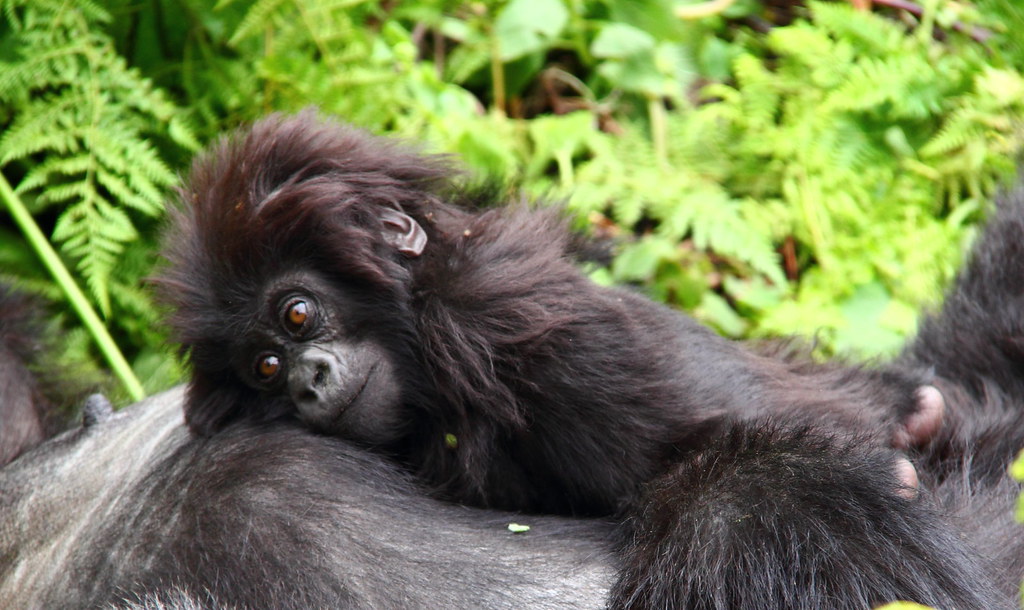
Trekking for gorillas in the Congo In comparison to Uganda and Rwanda,
Trekking for gorillas in the Congo In comparison to Uganda and Rwanda,
Trekking with gorillas in Congo In comparison to Uganda and Rwanda — If you intend to embark on a journey to Africa for gorilla trekking, you have three outstanding sites to consider: Uganda, Rwanda, and the Democratic Republic of Congo (DRC). Each of these nations provides distinct experiences within their national parks, which shelter the last mountain gorillas and, in the case of Congo, the Eastern Lowland gorillas. Although gorilla trekking is an exceptional experience irrespective of the destination, there are notable distinctions among these locales that may affect your choice.
Expense of Gorilla Trekking Permits
A crucial thing to consider is the expense of gorilla trekking permits. Prices fluctuate significantly among the three countries, chiefly attributable to varied tourism strategies and economic circumstances.
In Uganda, the cost of gorilla trekking is $700 per person for foreign non-residents, $600 for residents, and $70 (UGX 250,000) for East African citizens from Uganda, Rwanda, Tanzania, Kenya, Burundi, and South Sudan. This permit grants you one hour of interaction with the mountain gorillas in Bwindi Impenetrable National Park.
Rwanda: In Rwanda, the cost of a gorilla trekking permit is $1,500 for foreign non-residents, $500 for foreign residents, and $200 for East African citizens. This cost grants admission to Volcanoes National Park and includes a one-hour interaction with the mountain gorillas.
The expense for gorilla trekking in Congo fluctuates according on the season. In peak season (from mid-December to mid-March and June to October), the permit fee is $400 per individual. During the off-peak season (from mid-March to mid-May and mid-October to mid-December), the permit fee is decreased to $200. The permits for trekking Eastern Lowland gorillas in Kahuzi Biega National Park are priced as follows: $400 for foreign non-residents, $200 for East African citizens, and $20 for Congolese nationals.
Accessibility and Travel Arrangements
Rwanda’s Volcanoes National Park is frequently regarded as the most accessible choice. This park is within a 2-3 hour drive from Kigali, the capital of Rwanda, facilitating brief travel durations that enable gorilla viewing within a single day.
Conversely, reaching Bwindi Impenetrable Forest National Park in Uganda often requires a 9-10 hour journey from Entebbe International Airport. Nonetheless, recent advancements have become this more feasible. Travel arrangements through Kigali are now available for tourists, shortening the journey to 4-5 hours. This option enables travelers to utilize the East African Tourist Visa, granting access to both Rwanda and Uganda.
Options for Lodging
All three nations have a variety of lodging options, from economical to opulent, however there are significant disparities in terms of availability and quality.
Rwanda: Volcanoes National Park is distinguished for its upscale lodgings, featuring some of Africa’s most opulent choices. Bisate Lodge and Singita Kwitonda Lodge rank among the premier selections, offering outstanding comfort and service. These lodges serve individuals pursuing a superior experience and are frequently rated among the finest in Africa.
Uganda and Congo provide a diverse array of hotels, ranging from affordable to mid-range and upscale resorts. In Uganda and Congo, budget accommodations are more economical, with prices varying from $30 to $100 per night. This renders them attractive options for those seeking economical lodging without significantly sacrificing comfort.
Availability of Gorilla Trekking for Families: Uganda, Rwanda, and Congo
Uganda provides the greatest number of habituated gorilla families for trekking, surpassing both Rwanda and Congo. Bwindi Impenetrable Forest in Uganda features 20 habituated gorilla families, resulting in 160 permits accessible daily for gorilla trekking. Conversely, Volcanoes National Park in Rwanda hosts 12 gorilla families, offering 96 permits per day. Congo offers gorilla trekking opportunities with 10 families: 8 in Virunga National Park and 2 in Kahuzi Biega National Park. Acquiring a gorilla trekking permit in Uganda is typically more adaptable and attainable, particularly during peak seasons, in contrast to Rwanda and Congo.
Evaluating the Gorilla Trekking Experience
The gorilla trekking experience in Uganda, Rwanda, and Congo is notably comparable, with a 98% likelihood of encountering these majestic animals in their natural environment in each country. Each site, however, presents distinctive attributes that might enrich your experience. Uganda is distinguished by its Gorilla Habituation Experience in Bwindi Forest. This special opportunity permits a four-hour interaction with semi-habituated mountain gorillas, supervised by trackers and researchers, in contrast to the typical one-hour experience with fully habituated gorillas. In Congo, one has the unique opportunity to watch Eastern Lowland gorillas in Kahuzi Biega National Park, presenting a different kind of gorilla and an equally captivating encounter.
Trekking Distances in Uganda, Rwanda, and the Democratic Republic of the Congo
The distance required to hike for gorilla observation varies based on the individual gorilla family designated to you on the day of your expedition. In each of the three countries, gorilla families are assigned according to your physical fitness and preferences. If you choose a shorter trek, you may request this from the park administration on the day of the excursion. Alternatively, if you are equipped for a medium or extended journey, you may articulate this preference as well. Be aware that although the park rangers will endeavor to pair you with a family that aligns with your desired trip duration, the gorillas’ movements may still necessitate extended excursions if they choose to migrate.
Optimal Period for Gorilla Trekking: Congo versus Uganda versus Rwanda
Gorilla trekking is available year-round in Uganda, Rwanda, and Congo. The optimal periods for trekking are the dry months of June to August and December to February, characterized by limited rainfall and reduced path slipperiness. Traveling during the rainy seasons of March to May and November may lead to muddier routes; nonetheless, some resorts offer discounts on accommodations during these periods.
We are here to support you throughout your gorilla trekking expedition in Uganda, Rwanda, or Congo. Do not hesitate to reach out to us for a smooth and memorable gorilla trekking experience.



